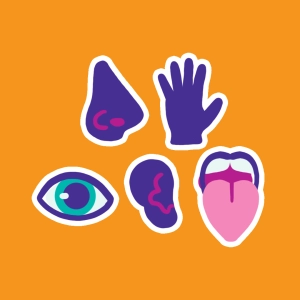 Video: The 5 Senses
Video: The 5 Senses
Animals, including humans, need to constantly interact with their environment. These interactions enable them to move, to eat, to reproduce and to escape from enemies.
They are made possible by the senses that animals possess.
There are 5 senses :
Vision, hearing, smell, taste, touch
Depending on the species and its way of life, this or that sense may be more or less developed. Thus the mole, which lives underground, does not need a good sense of vision, but its senses of smell, hearing and touch are highly developed.
(…)
The eagle for example needs to detect the slightest movement on the ground and its vision is particularly sharp.
Each sense is associated with an organ. Thus, among humans, the eye is the organ of vision (…) the ear that of hearing (…) the nose that of smell (…), the tongue that of taste (...) and the skin that of touch.
The sense organs contain a large number of receptors. These detect what are called stimuli. (…)
It is the sensory nerves that transport the nerve message to a specific part of the brain, which interprets it in order to construct our perception. (…)
Let’s take the example of the eye:
The retina is located at the back of the eye. It is covered with millions of photosensitive cells that transform light into nerve messages. (…)
These messages are then carried to the brain by the optic nerve. (…)
The area of the brain that is dedicated to vision is called the visual cortex. It is at the back of the brain, and it is in this region that nerve messages are interpreted. (…)
Our memory plays a major role in giving significance to the perceived image.

Discover EduMedia for free
The interactive encyclopedia that brings science and math to life in the classroom.
Over 1,000 resources





